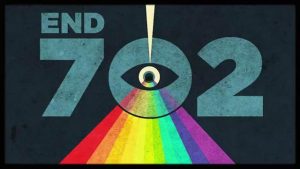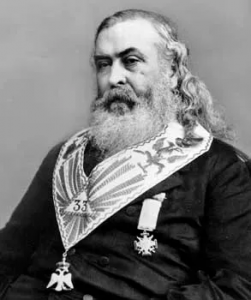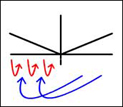“Nicaragua Betrayed” Summary— Chapter 2 - How it all Began
by Edward Ulrich
News of Interest.TV
February 8, 2011
This chapter describes the beginnings of militant Communist Sandinista guerrilla activity in Nicaragua being due to infiltration of churches and universities as well as being due to information published by extremist newspapers; also described is agricultural programs Somoza implemented, his successful campaign for reelection to the Presidency, and a meeting he had with the President of Venezuela Carlos Andrez Perez.
Following are key points from the chapter:
— As far back as 1963, guerrilla activity had existed in Nicaragua that represented sporadic attempts by the Leftist movement to influence and control the people in some remote areas, but at the time it represented no serious threat to the government of Nicaragua.
— After the earthquake, guerrillas stepped up their activities in the mountainous areas of northeast Nicaragua, and they were told by Cuba that if they could recruit eight hundred fighting men then they would be given all of the arms and ammunition they wanted. They then embarked on raids where they killed eighty justices of the peace who they viewed as local representatives of the government, and they even took control of a small town and held it for a brief time. Somoza dispatched the commando “Bravo” Salazar’s troops to the area and they brought an end to the guerrilla activity, but it was like a cancer where such activity would then appear elsewhere.
— Somoza explains that had he been a dictator as he was accused of being by his political opponents and by the international press, he would have been able to eliminate the guerrilla activity altogether, but it would have meant the curtailment of freedoms of the people of Nicaragua and the banishment of the Sandinista Jesuit priests.
— Many priests sought out youngsters from the upper class families and indoctrinated them to the leftist cause using Marxist brainwashing techniques, which caused the children of many successful families in Nicaragua to turn against their parents. It was reported in the July 11, 1979 issue of Accuracy in Media, Inc. that a Sandinista “Roving Ambassador” preist had long talks with the Ayatollah Khomeini in Iran and in Cuba, and he had established a Catholic commune on an island in Lake Nicaragua, which became a Sandinista recruiting base. Somoza explains that this is only one priest who happened to be reported in the media, and usually such priests conducted their subversive activities without exposure of public scrutiny. [Note— Such hypocritical activities of priests is indicative of the infiltration of the Catholic Church by the Illuminati, who have an agenda of undermining the Church and using it to spread Communism. See the article A Summary of the Secret Society the “Illuminati,” Drawn from the Works of Henry Makow.]
— Many of the militant priests came from the U.S. and Spain, and Somoza knew who they were and what they were teaching due to intelligence sources. Somoza explains that if he were a dictator like Castro, he could have banished the priests or had them liquidated, but he believed in freedom of religion and instead sought rather to only monitor their activities and curtail their influence as much as possible.
— Certain university staff members and students opposed Somoza and the free enterprise system. The university was a hotbed of Communist activity and leftist indoctrination was a way of life on campus. Somoza believed in not limiting what was taught in the universities (in contrast to the Sandinistas who now control the government and also now control what can and can’t be taught in the schools). Like all universities, it was run by a board of regents that contained many leftists and even some known Communists, and Somoza didn’t choose to interfere with the board despite having the authority to place the regents in the hands of the government. Somoza did have a list of the Sandino Communist professors, their leaders, and students who continually berated him and the government. The Dean of the university was an admitted socialist who is now the Minister of Education in the Sandinista government. Somoza laments that these people were espousing a cause that destroyed their freedoms, and they learned that once freedom is lost, it cannot be regained. Under the new government the students are still allowed the privilege of berating Somoza, but they cannot condemn their new Communist ruling government.
— One man who was directly connected to all the leftist Sandinista activity was Pedro Joaquin Chamorro, who overtly worked with the Jesuit priests, university officials and students, and the FSLN. Despite his activities being well known to the Somoza Administration, he was not banished or imprisioned. Chamorro was also the co-owner of the newspaper La Presna, and he used this newspaper to blast Somoza nearly every day. The newspaper promoted the Communist cause and essentially advocated an overthrow of the government, but Somoza continued to allow the newspaper to publish until they were actually in serious battle with the Sandinistas, due to the right of the freedom of the press. Many visiting dignitaries were shocked by the fact that the newspaper was allowed to be printed with what it was saying. Somoza says, “To all of them, I could point to it and say, ‘Perhaps now do you believe that we have freedom of the press in Nicaragua?’” Later when Chamorro was assassinated, the Communists and the international press incorrectly blamed Somoza; but Chamorro was the last person Somoza wanted killed because he then became a martyr.
— Nicaragua’s election laws were patterned to be exactly the same as the United States, contrary to what was claimed in the U.S. press. Somoza ran for President again in 1973 after receiving his party’s nomination, and he campaigned in every city and municipality of Nicaragua, stressing the importance of developing alternative sources of energy such as geothermal power as well as predicting a coming food crisis.
— Nicaragua had many thousands of undeveloped acres that were suitable for farming which was free to farmers who were willing to clear it, therefore a family could clear a considerable amount of land to make it productive. The agricultural sector of Nicaragua knew that Somoza’s interest in small farmers was not a campaign gimmick and that he was concerned about their welfare. Somoza also introduced education reforms in primary schools where the basics of agriculture were taught to everyone. In Somoza’s visits throughout Nicaragua, he determined that the small farmers were the poorest people, and he then formed a study of the agricultural sector at the level of the poorest people, and the study reflected badly on Nicaragua’s society; so a prognosis was formulated of needing new agricultural technology being made available as well as more arable land. It was the first such agricultural study made in Latin America.
— Somoza established a program called “INVERNO” that guaranteed land would be available to small farmers for them to acquire a decent living for them and their families. Either government land would be given to them, or the government would help them to acquire land from large landowners next door. The program was largely paid for by the imposition of new taxes on land that was sitting idle and not being utilized for farming or ranching. The program was a success, and it was touted internationally as an example of a means to assist impoverished farmers.
— Somoza’s political campaign was a huge success, and the opposing party’s campaign essentially never got off the ground with only a few people showing up at their rallies. Nicaragua had a population of 2,250,000 people, and 850,000 turned out to vote, with over 750,000 voting for Somoza. The international press inaccurately criticized the election, and Somoza shows that prior to the election the Organization of American States (OAS) was invited to send observers and poll watchers, and they reported no irregularities. Also the press was invited to monitor the polling places as well, but very few of them showed up.
— Shortly after the election, President Carlos Andres Perez of Venezuela invited five presidents of Central America and Omar Torrijos of Panama to his country to discuss issues about the rising price of his Venezuelan oil, because the countries purchased petroleum from his country. After the formal meeting, Somoza was able to have a private conversation with Perez where he asked him why Venezuela was pushing to establish normal relations with Cuba. Perez’s past associations with Castro resulted in the deaths of thousands of innocent people, and Perez told him that it was because “he didn’t want Castro to hurt his government,” which greatly surprised Somoza. Somoza accounts, “I no longer had respect for the man. I recall thinking that if all the major governments of Latin America were headed by weak men like Carlos Andres Perez, we were in a hell of a spot.”
Purchase the book “Nicaragua Betrayed” from Amazon.com.








